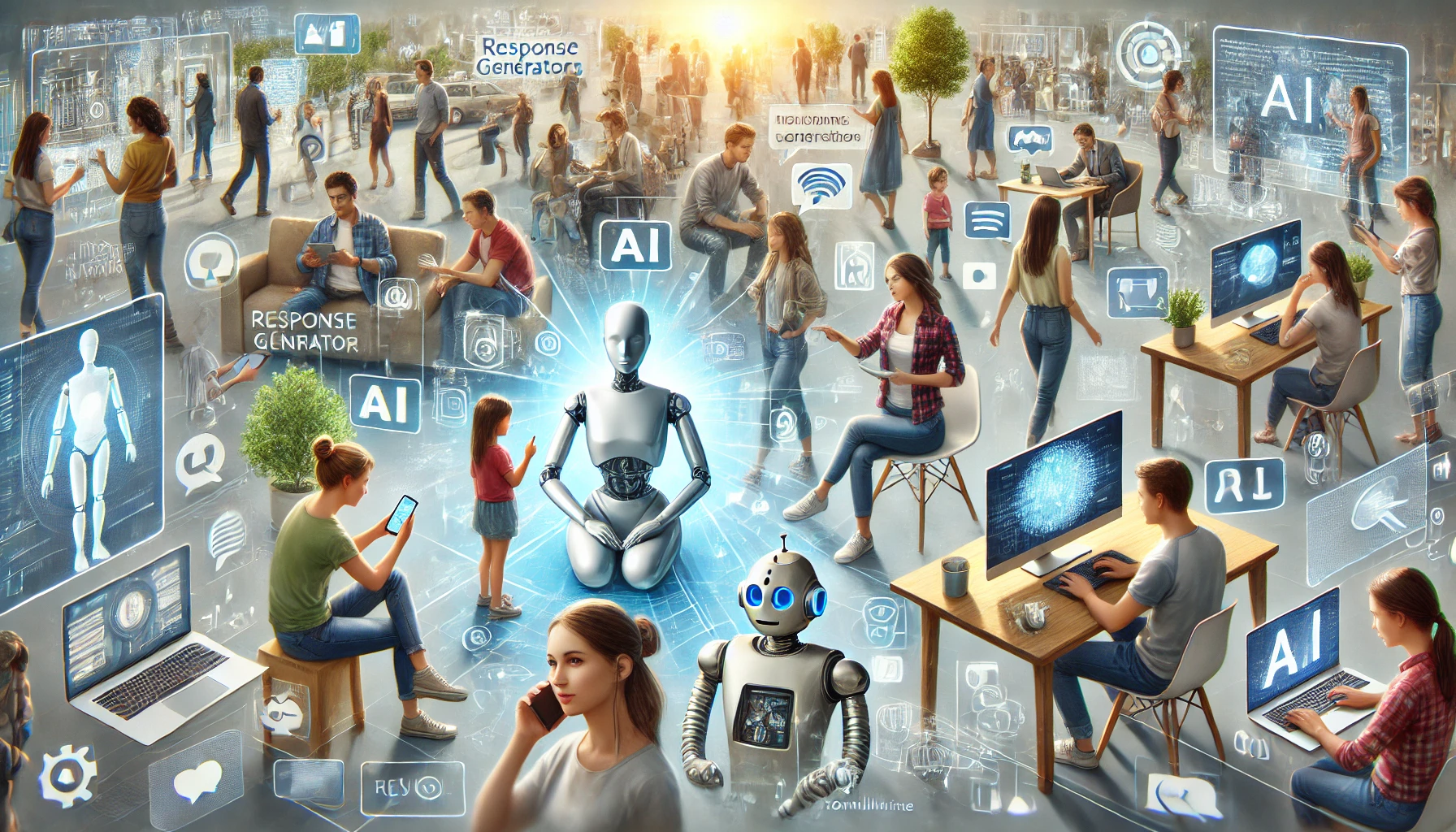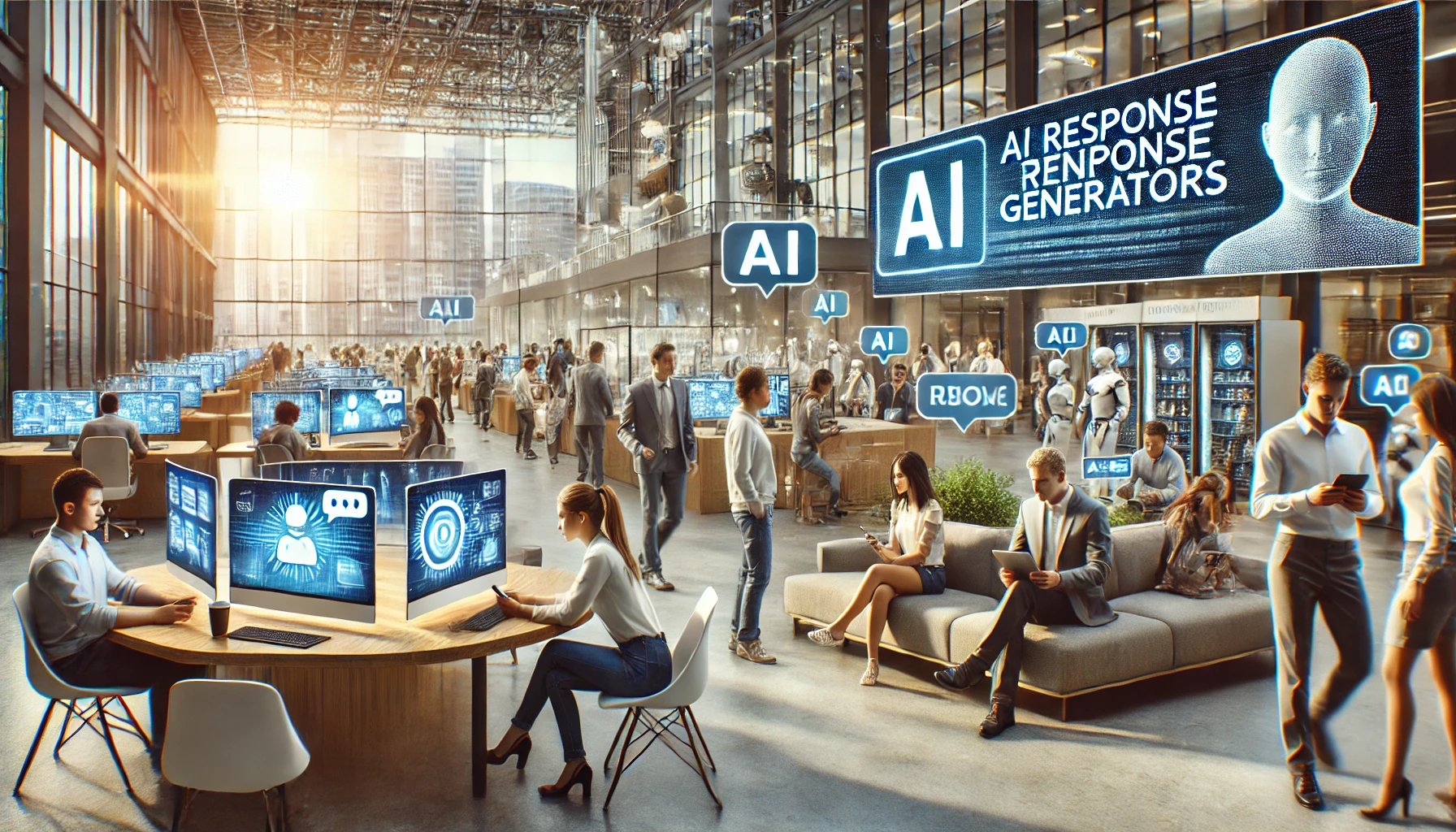
In today’s fast-paced digital world, the demand for quick and efficient communication has reached new heights. AI Response Generators are emerging as powerful tools that automate and enhance interactions across various industries, from customer service to personal assistance. These advanced AI-driven models understand, generate, and manage responses, offering instant, context-aware interactions that closely mimic human communication. This article explores how AI Response Generators work, their critical applications, benefits, challenges, and their role in shaping the future of automated communication.
What Are AI Response Generators and How Do They Work?
AI Response Generators are AI-powered systems that comprehend user inputs and deliver relevant, real-time responses. Powered by advanced machine learning models like GPT (Generative Pre-trained Transformer) and BERT (Bidirectional Encoder Representations from Transformers), these tools can engage in conversations, answer questions, and assist with various tasks, making them invaluable for both businesses and individuals.
How AI Response Generators Work
- Natural Language Processing (NLP): NLP is the backbone of AI Response Generators, allowing them to process and understand human language. Through NLP, these models analyze user inputs, detect vital phrases, and generate coherent and contextually accurate responses. This technology enables the AI to parse complex language structures, making it capable of understanding nuances in conversations.
- Machine Learning Algorithms: These systems rely on sophisticated machine learning algorithms trained on vast datasets, including text from books, articles, and online content. This training helps the AI learn the structure, patterns, and semantics of language, enabling it to generate relevant answers. For instance, OpenAI’s GPT models are trained on a diverse range of internet text, equipping them with a broad understanding of language context.
- Continuous Learning and Adaptation: AI Response Generators improve over time through constant learning from user interactions, enhancing their ability to provide accurate and contextually appropriate responses. This ongoing refinement process ensures that the AI evolves with changing language trends and user behaviors.
- Integration with Existing Systems: AI Response Generators can be seamlessly integrated into existing platforms like websites, customer support systems, and messaging apps, allowing businesses to provide 24/7 automated support, enhancing user experience and operational efficiency. For example, Google’s Dialogflow offers easy integration capabilities, enabling developers to create conversational interfaces across various channels.
Critical Applications of AI Response Generators
AI Response Generators are transforming communication across numerous sectors by automating responses, improving accuracy, and boosting user engagement. Here are some critical applications:
Customer Service and Support
AI Response Generators are widely used in customer service to automate responses to frequently asked questions, troubleshoot issues, and guide users through complex processes. This not only improves customer satisfaction but also reduces the workload on human agents.
- Example: Companies like Zendesk utilize AI-driven response generators to streamline customer interactions, offering consistent and instant support across multiple channels. The use of AI helps handle repetitive queries, allowing human agents to focus on more complex issues.
Sales and Marketing
In sales, AI Response Generators help engage potential customers, answer product-related questions, and guide them through the purchasing journey. This automation boosts conversion rates and enhances the overall customer experience.
- Example: E-commerce platforms integrate AI chatbots to recommend products based on customer preferences, upsell additional items, and provide personalized shopping experiences. Tools like HubSpot use AI to create interactive sales experiences, providing tailored responses that can drive engagement and close sales faster.
Internal Communication and HR Support
AI Response Generators are used within organizations to manage internal communication. From answering common HR queries to providing information on company policies, these tools help employees get the information they need without delays.
- Example: AI chatbots on platforms like Slack assist employees with routine questions about leave policies, expense reports, and other HR-related matters, improving internal efficiency and saving valuable time for HR teams.
Education and E-Learning
In education, AI Response Generators provide instant feedback, answer academic questions, and assist with tutoring. These tools help make learning more interactive and accessible for students of all ages.
- Example: Online learning platforms like Coursera and Khan Academy use AI to provide personalized learning experiences and support students with instant answers to their questions, enhancing the overall learning process.
Healthcare and Medical Assistance
AI Response Generators are significantly impacting healthcare by assisting patients with symptom checking, providing preliminary medical advice, and helping schedule appointments. These tools improve access to information and streamline patient care.
- Example: AI-powered medical chatbots on platforms like Ada Health provide users with symptom assessment guidance on the next steps and help direct patients to the appropriate care.
Personal Productivity and Virtual Assistants
AI Response Generators serve as virtual assistants, helping users manage schedules, set reminders, draft emails, and even suggest message responses. This automation enhances productivity and allows individuals to focus on more critical tasks.
- Example: Digital assistants like Google Assistant and Amazon Alexa use AI to answer questions, perform tasks, and provide personalized recommendations based on user behavior.
Benefits of AI Response Generators
- Efficiency and Speed: AI Response Generators handle numerous queries simultaneously, providing instant answers and significantly reducing response times. This is particularly valuable in high-traffic environments where timely responses are crucial.
- Consistency in Communication: AI provides consistent responses every time, ensuring that users receive accurate and standardized information. This builds trust and improves the overall user experience, as users can rely on the AI for dependable answers.
- 24/7 Availability: AI Response Generators operate around the clock, offering continuous support without the need for breaks, enhancing user satisfaction by providing help whenever needed. This always-on availability is a major advantage over traditional customer support.
- Cost Reduction: Automating responses reduces the need for large customer service teams, leading to significant cost savings and allowing businesses to reallocate resources to critical areas such as product development and marketing.
- Scalability: AI Response Generators easily scale to handle increasing volumes of queries without compromising performance, making them ideal for businesses experiencing growth or seasonal demand fluctuations.
- Enhanced User Engagement: AI Response Generators keep users engaged and satisfied by providing instant, relevant responses. This leads to higher retention rates and better overall interaction with the brand or service.
Challenges and Considerations
While AI Response Generators offer numerous advantages, they also present particular challenges:
- Accuracy and Context Understanding: Despite their advancements, AI Response Generators can misunderstand complex queries or provide irrelevant answers, especially with vague or nuanced inputs. This highlights the need for ongoing model improvements.
- Dependence on Quality Data: The effectiveness of AI response generators heavily depends on the quality of the data on which they are trained. Poor or biased data can lead to misleading responses, necessitating careful data curation and continuous updates.
- Data Privacy and Security: AI systems often handle sensitive information, raising concerns about privacy and data security. Ensuring compliance with privacy regulations, such as GDPR, and implementing robust security measures are crucial.
- Maintaining a Human Touch: While AI can handle many tasks, it lacks human empathy and emotional intelligence. Balancing AI automation with human oversight is essential for maintaining personal connections with users, especially in sensitive situations.
- Bias in Responses: AI Response Generators can inadvertently reproduce biases present in their training data, leading to biased or unfair responses. Continuous monitoring, feedback mechanisms, and adjustments are necessary to minimize these biases and ensure fair interactions.
Tips for Effective Use of AI Response Generators
- Craft Clear and Specific Prompts: The quality of the response often depends on the clarity of the input. Providing specific and detailed prompts helps AI generate more accurate and relevant answers.
- Regularly Update and Train the Model: Keep the AI model updated with new data and improvements to maintain accuracy and relevance. Regular updates help the AI adapt to new trends and information.
- Incorporate Feedback Mechanisms: Allow users to provide feedback on AI responses to identify areas for improvement. This feedback helps refine the model’s performance over time.
- Combine AI with Human Oversight: For sensitive or complex issues, ensure that there is a clear path for escalating queries from AI to human agents. This ensures that users receive the best possible support when AI reaches its limitations.
- Monitor for Biases and Adjust Accordingly: Regularly review AI-generated responses to identify biases or inaccuracies. Implement corrective measures to ensure the AI remains fair and reliable.
The Future of AI Response Generators
The future of AI Response Generators is bright, with ongoing advancements promising even more accurate, personalized, and context-aware interactions. Future developments may include improved emotional intelligence, allowing AI to detect and respond to users’ emotions, further enhancing the interaction experience.
We can also expect greater integration with emerging technologies such as augmented reality (AR) and virtual reality (VR), which could create more immersive customer service experiences. As AI models become more refined, they will play a crucial role in shaping the future of automated communication, offering smarter, faster, and more engaging ways to connect.


Thank you for your shening. I am worried that I lack creative ideas. It is your enticle that makes me full of hope. Thank you. But, I have a question, can you help me?